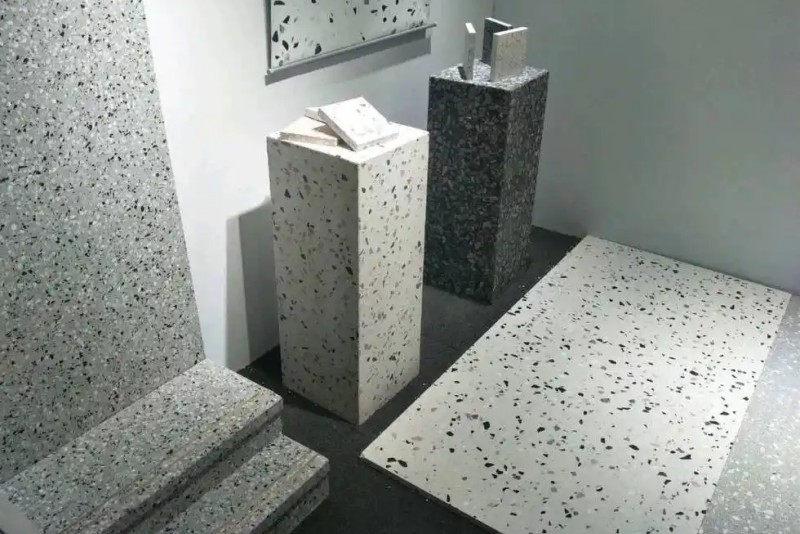Artificial Marble Surface Characteristics
Artificial marble, also known as engineered stone, is a popular material for both residential and commercial applications. Made from natural stone particles combined with a man-made resin, it offers a range of benefits that make it ideal for a variety of decorative and functional uses.
1. Durability and wear resistance
High hardness: One of the outstanding features of artificial marble is its high hardness. The combination of natural stone particles and resin creates a strong material that can withstand daily wear and tear. This durability makes artificial marble suitable for use in high-traffic areas such as kitchens, bathrooms and commercial spaces.
Scratch resistant: The surface of cultured marble is designed to be scratch-resistant. Unlike natural marble, which can be easily scratched or etched, cultured marble maintains its integrity even with regular use. This property ensures that the surface remains visually appealing over time, making it an ideal choice for countertops and tabletops.
2. Corrosion and pollution resistance
Chemical resistance: The artificial marble surface has excellent resistance to a wide range of chemicals, including household cleaners and acids. This property makes it less susceptible to damage from spills, ensuring that the surface remains intact and visually attractive.
Stain resistance: The non-porous nature of cultured marble means it is less susceptible to stains than natural stone. Liquids are less likely to penetrate the surface, making it easier to clean and maintain. This feature is especially useful in kitchens and bathrooms where spills are common.
3. Aesthetic appeal
Various designs: Cultured marble is available in a variety of colors, patterns, and finishes, allowing for greater design flexibility. Whether you prefer a classic look or a modern aesthetic, there is a cultured marble option to suit your style. The ability to mimic the look of natural stone while providing consistent patterns and colors is a significant advantage.
Smooth and flat surface: The surface of artificial marble is very smooth and flat, giving it a sleek and shiny appearance. This quality not only enhances the visual appeal of the material, but also improves its functionality as it is easier to clean and maintain.
4. Easy to maintain
Simple cleaning: Maintaining a cultured marble surface is simple. Regular cleaning with mild soap and water is usually enough to keep the surface looking new. Unlike natural stone, which may require special cleaning products, cultured marble can be easily cared for using common household cleaners.
No sealing required: While natural marble typically requires periodic sealing to protect it from stains and moisture, engineered marble requires no such extra maintenance. This feature saves time and effort, making it a practical choice for busy homes and commercial environments.
Artificial Marble Surface Polishing Method
1. Preparation before grinding
Cleaning the Surface
Remove debris and dirt: Clean the surface of your cultured marble thoroughly to remove any dust, dirt or debris. Use a soft cloth or sponge and a mild detergent to wipe the surface.
Fill gaps: Check the surface for cracks or gaps. If any are found, fill them with a suitable filling material to ensure a smooth and level sanded surface. Allow the filling material to cure completely before continuing.
2. Choose sandpaper
Start with coarse sandpaper
Coarse sanding: Start by sanding any noticeable blemishes, scratches or uneven areas on the surface with coarse sandpaper (approximately 60-80 grit).
Progressive refinement: After an initial sanding with coarse grit sandpaper, use progressively finer grit sandpapers (100-400 grit) to achieve the desired smoothness. Each grit sandpaper should be used in succession until the surface feels smooth to the touch and looks good.
3. Water mill grinding
Keep it clean: Make sure the water and belt remain clean throughout the process. Contaminants can cause secondary scratches or blemishes on the surface, which can compromise the quality of the finish.
Consistent motion: Move the water grinder across the surface in a consistent, overlapping motion. This technique ensures even grinding and prevents uneven wear.
4. Hand polishing
Polishing pad: Use a polishing pad suitable for cultured marble. Apply the polish to the polishing pad and rub it into the surface in circular motions. After the grinding process is complete, hand polishing is the final step to achieve a smooth and bright surface.
Final check: Continue polishing until the surface is smooth and glossy. Check the surface periodically to ensure that all areas are evenly polished.
Important Considerations for Polishing Artificial Marble Surfaces
1. Choose the right sandpaper and polish
Sandpaper grit: Start with a coarser sandpaper for initial grinding, then gradually transition to finer sandpaper. Using too coarse a grit paper may scratch the surface, while using too fine a grit paper initially may not effectively remove imperfections.
Polishing compound: Choose a high-quality polish designed specifically for cultured marble. The right polish will enhance the shine without causing damage or leaving residue.
2. Keep the surface wet when grinding and polishing
Prevent dust accumulation
Keep out dust: Keeping the surface moist helps prevent dust accumulation, which can interfere with the grinding and polishing process. Dust can cause scratches and degrade the surface quality.
Recontamination: Moisture reduces the risk of recontamination due to wear and tear. When the surface is dry, particles can become airborne and redeposit on the surface, causing blemishes.
3. Clean the surface after grinding and polishing
Remove residue: Wipe the surface with a soft cloth and a suitable cleaner, making sure to remove any remaining polish or debris. Residue can dull the surface and detract from its overall appearance.
Final inspection: After cleaning, inspect the surface for any remaining imperfections or areas that may require additional polishing. The final inspection ensures the surface has achieved the desired smoothness and gloss.
In Conclusion
In summary, polishing a cultured marble surface can significantly improve its smoothness and gloss, making it more visually appealing and durable. Attention to detail and proper maintenance will ensure that your cultured marble surface remains beautiful and long-lasting, making it an excellent choice for both home and commercial applications.
Post time: Dec-13-2024

